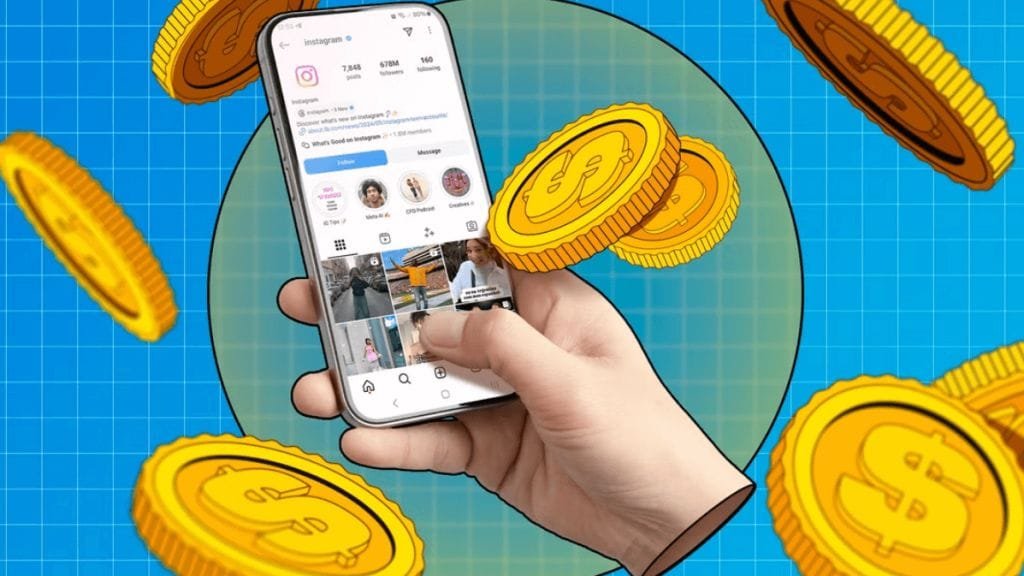
How Do Social Media Sites Make Money?
1. Advertising
Social media companies rely heavily on advertising as their primary revenue stream. They provide businesses with the ability to target ads based on user data, such as location, interests, browsing habits, and more. Platforms like Facebook, X (formerly Twitter), Instagram, and Reddit can charge advertisers based on a variety of metrics like clicks, impressions, or engagement, and businesses can pay more for premium placements.
- Example: On Instagram, you might see sponsored posts in your feed or in stories. On Reddit, ads appear directly on the front page or within subreddit communities.
The balance is critical—too many ads can frustrate users and cause them to leave, while a well-targeted ad experience can increase engagement and drive purchases.
2. User Data Licensing
Social media platforms collect vast amounts of data from users, which they can license to third parties. This data is anonymized and aggregated, meaning companies don’t sell personal information like email addresses or phone numbers. However, they provide valuable insights based on behavior, preferences, and interactions.
- Example: AI companies, including those building language models and other AI applications, purchase this data to help train their algorithms. Reddit, for instance, struck data licensing deals with AI companies worth over $200 million.
3. Premium Subscriptions
Many platforms offer premium, paid membership options to unlock additional features. These features might include enhanced experiences, exclusive content, or more control over your interactions on the platform (e.g., seeing fewer ads).
- Example: Reddit Premium offers an ad-free experience, access to exclusive subreddits, and additional perks. LinkedIn Premium includes tools for job seekers, networking, and in-depth analytics on profile visitors.
While premium subscriptions don’t generally account for the majority of revenue, they provide consistent income from users who want a better or more tailored experience.
4. In-App Purchases
In-app purchases give users the ability to buy virtual goods, often for use in social interactions or creative expression. These can range from cosmetic items (like filters, effects, or skins) to functional purchases (like boosts or extra features).
- Example: TikTok allows users to purchase “coins” that can be used to buy virtual gifts for creators, while Instagram offers badges that users can buy to support creators during live streams.
These microtransactions are lucrative, especially for younger users who are accustomed to spending small amounts in digital environments.
5. Virtual Gifting and Tipping
This model revolves around creators earning money directly from their followers. Fans buy virtual gifts or tokens, which they then give to their favorite creators during live streams or other interactive moments. The platform typically takes a cut of each transaction.
- Example: TikTok’s gifting system allows users to purchase gifts during live streams, while YouTube’s “Super Chats” let viewers pay to highlight their messages.
This creates a new revenue stream for social media platforms while enabling creators to directly monetize their content and interactions with followers.
6. E-Commerce Integrations
Many social media platforms now integrate e-commerce features, allowing users to browse and purchase products directly within the app. This “social shopping” is particularly effective because it reduces friction, allowing users to purchase products without leaving the platform.
- Example: Instagram has built-in shopping features, allowing users to click on products within posts and stories and complete purchases directly in the app. TikTok has also incorporated shopping features into its platform, allowing brands to tag products in videos.
Social media platforms often take a commission from each sale or charge brands for featured placement, making this a win-win for both creators and the platform itself.
7. API Access Fees
API (Application Programming Interface) access allows third-party tools to connect with social media platforms. These tools can help with scheduling posts, analytics, customer service, or other functionalities. By charging for API access, social platforms can monetize the infrastructure they’ve built and control how external services interact with their ecosystem.
- Example: Reddit raised API fees in 2023, which led to some third-party Reddit apps shutting down. The new pricing model was part of Reddit’s strategy to profit from its large user base and control how external apps use its data.
8. Venture Capital
Venture capital is often a critical part of the early-stage funding for social media platforms. Investors provide capital in exchange for equity, with the expectation that the platform will eventually grow large and profitable. These investments allow platforms to develop and scale quickly, though venture capitalists often expect a return on investment when the platform either goes public or gets acquired.
- Example: Facebook and Twitter were initially funded by venture capitalists who believed in their long-term potential, and in return, these early investors gained significant equity in the companies when they became publicly traded.
Conclusion
While social media platforms typically start with “free” services to attract users, they use a variety of business models to generate revenue. Advertising, user data licensing, and premium subscriptions are some of the most common, but more recent strategies like e-commerce integrations, virtual gifting, and API fees are growing in importance. Together, these methods allow social media companies to turn large, engaged user bases into profitable enterprises.